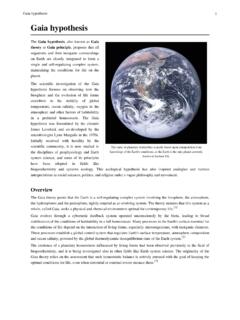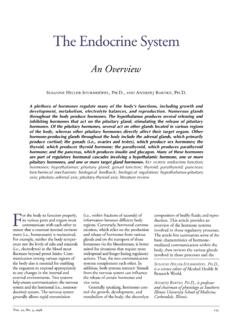Search results with tag "Homeostasis"
Interactions of Human Body Systems
neprisstore.blob.core.windows.nethomeostasis. In the beginning of this lesson, you read that temperature homeostasis is maintained by producing thermal energy. The endocrine, nervous, and muscular systems work together and maintain temperature homeostasis. Insulin, a hormone released from the pancreas, works with the digestive system and maintains energy homeostasis. Visual ...
Temperature Homeostasis (thermoregulation)
biologymad.comTemperature Homeostasis (thermoregulation) One of the most important examples of homeostasis is the regulation of body temperature. Not all animals can do this physiologically. Animals that maintain a fairly constant body temperature (birds and mammals) are called endotherms, while those that have a variable body temperature (all
Why is homeostasis important? - KScience
www.kscience.co.ukWhat is homeostasis? Homeostasis is the maintenance of a constant internal environment. Automatic control systems throughout the body maintain temperature and water at steady levels, which are
Human Physiology/Homeostasis
resources.saylor.orgHuman Physiology/Homeostasis 1 Human Physiology/Homeostasis ... thermometer in the thermostat waits to sense a temperature change either too high above or too far below the 70 degree set point. When this change happens the thermometer will send a …
Teacher notes and Hands-on Activity for Homeostasis ...
msnickelbiology12.weebly.comhomeostasis to entry-level Biology students and includes a kinesthetic game where students will actively engage in learning about the mechanisms that maintain blood glucose levels in humans. Unit Topic: Homeostasis Central Concept: The human body functions through a series of negative feedback pathways.
High School Science Virtual Learning Biology
sites.isdschools.org1. Homeostasis is the ability to maintain constant internal conditions when outside conditions change. 2. Homeostasis is important because if it is disrupted, a disease or disorder may result. 3. Negative feedback is a control system that helps the body maintain homeostasis by sending a signal to stop a response. 4.
Ion Transport, Resting Potential, and Cellular Homeostasis ...
www.sci.utah.eduIon Transport, Resting Potential, and Cellular Homeostasis Introduction These notes cover the basics of membrane composition, transport, resting potential, and cellular homeostasis. After a brief introduction to the first two topics, we will spend most of our time on ... We will discuss ions that are subject both to diffusion and to an electric ...
Human homeostasis - resources.saylor.org
resources.saylor.orgHuman homeostasis 2 Energy Energy balance is the homeostasis of energy in living systems. It is measured with the following equation: Energy intake = internal heat produced + external work + storage.
Notes - pmt.physicsandmathstutor.com
pmt.physicsandmathstutor.comHomeostasis (5.1) Homeostasis is the maintenance of a constant internal environment. Mechanisms are in place to keep optimum conditions despite internal and external changes.
HSL HARPUR HILL, BUXTON, DERBYSHIRE, SK17 9JN
www.hse.gov.uk8 3 Thermoregulation and the Importance of Homeostasis 3.1 Definitions The following provides a brief description of thermoregulation, homeostasis, dehydration and associated terminology.
Mark scheme F214 Communication, Homeostasis & …
www.ocr.org.ukOxford Cambridge and RSA Examinations GCE Biology Unit F214: Communication, Homeostasis & Energy Advanced GCE Mark Scheme for June 2015
Introduction to Pharmacodynamics
samples.jbpub.commuscles take up glucose from your blood, your liver supplies more glucose to the blood to main-tain the level of blood glucose at a constant 5 mM. Through evolution, organisms have developed a remarkable collection of regulatory mechanisms for maintaining homeostasis. If the homeostasis does not work correctly, however, we become sick.
EULAR Textbook on Rheumatic Diseases References chapter …
www.eular.orgEULAR Textbook on Rheumatic Diseases 1 Garbagnati E, Boschetti M. Uric acid homeostasis in lean and obese girls during pubertal development. Metabolism 1994;43:819-21. 1 Mikkelsen WN, Dodge HJ, Valkenburg H, Himes S. The distribution of serum uric acid values in a population unselected as to gout or hyperuricemia.
Bioluminescence in Vibrio spp.: A Mechanism for Redox ...
www.mbl.eduBioluminescence in Vibrio spp.: A Mechanism for Redox Homeostasis? James Russell MBL Microbial Diversity Course 2015 Abstract Cells rely intimately on dinucleotide cofactors for metabolism.
Lab Values: Interpreting Chemistry and Hematology for ...
lms.rn.comMar 30, 2012 · The human body is constantly trying to keep a balance of homeostasis with fluid and electrolytes. Electrolytes are chemical compounds that break down into ions, carrying a positive or negative charge. When these are not in balance, pathological changes occur in the human body (LeFever, Paulanka, & Polek, 2010). Sodium (Na+)
FLUID AND ELECTROLYTE IMBALANCES - Weebly
www.nursing4all.weebly.com1. Homeostasis restored. 2. Free of complications. 3. Condition/prognosis and treatment needs understood. 4. Plan in place to meet needs after discharge. Note: Because fluid and electrolyte imbalances usually occur in conjunction with other medical conditions, the following information is offered as a reference.
[1] J - pmt.physicsandmathstutor.com
pmt.physicsandmathstutor.com1 The maintenance of a stable body temperature is an important aspect of homeostasis in endotherms. This is known as thermoregulation. (a) (i) State where the core body temperature is monitored. [1]
FWRITR - Mr. Paull's Science Site
paullsci.webs.comhomeostasis. Your answer s ee//s. ... In many animals, glucose. rather than starch. is transported by the blood through the body to all the cells. Starches in many foods are digested to yield glucose. Based on what you learned in this laboratory activity, explain why the digestion of starch to glucose is necessary. ...
CELL TRANSPORT WORKSHEET - Mrs. Slovacek's Science
mrsslovacek.weebly.comThe structure most responsible for maintaining cell homeostasis is the cytoplasm cell wall mitochondria cell membrane 11. A cell membrane is made up of a(n) ... 21. A cell full of glucose is surrounded by blood: a. Will water move from the blood to the cell, or from the cell to the blood? From the blood into the cell.
Gaia hypothesis - Harvard University
courses.seas.harvard.edutemperature, ocean salinity, oxygen in the atmosphere and other factors of habitability in a preferred homeostasis. The Gaia hypothesis was formulated by the chemist James Lovelock and co-developed by the microbiologist Lynn Margulis in the 1970s. Initially received with hostility by the scientific community, it is now studied in
Best Practices in Managing Table 3. 6 HYPERKALEMIA
www.kidney.org16 May cause hypokalemia and electrolyte disturbances Cannot be used in medical emergencies16 16 Caution in patients with heart failure due to sodium load Cation exchange polymer ... Many factors affect potassium homeostasis.2 Table 1. Table 2. Acute Versus Chronic Hyperkalemia 3, 4 Chronic Risk Factors for Hyperkalemia in CKD 5, 6, 7, 8
4.5 Homeostasis and Response Name: Higher
www.crownhills.comhigh body temperature. Data was collected to find out whether paracetamol, ibuprofen or a combination of these two medicines was the best to reduce high body temperature in children. Children who were ill with high body temperatures were identified at doctors‟ surgeries. These children were put into three treatment groups:
The Endocrine System - National Institutes of Health
pubs.niaaa.nih.govment (i.e., homeostasis) is maintained. For example, neither the body temper-ature nor the levels of salts and minerals (i.e., electrolytes) in the blood must fluctuate beyond preset limits. Com-munication among various regions of the body also is essential for enabling the organism to respond appropriately to any changes in the internal and
Biology essay titles - AQA
filestore.aqa.org.ukHo - 3.5.4 Homeostasis – response to changes in internal environment F - 3.5.5 Feedback G - 3.5.7 Gene 25 The topics listed contain ... B - Control of blood glucose concentration Nf - Negative feedback Gn - Gene expression The topics listed contain material that could be made relevant to the title.
HOMEOSTASIS: POSITIVE AND NEGATIVE FEEDBACK …
www.michigan.govHomeostasis refers to the maintenance of relatively constant internal conditions. For example, your body shivers to maintain a relatively constant body temperature when the external environment gets colder. To maintain homeostasis, your body adapts two types of feedback mechanisms: Negative feedback occurs when a change in a
Homeostasis y enfermedad, una estrategia de aula …
www.bdigital.unal.edu.coHomeostasis y enfermedad, una estrategia de aula para promover el autocuidado OSWALDO JAVIER GONZÁLEZ VELANDIA Universidad Nacional de Colombia
Homeostasis in Plants
www.houstonisd.orgPlant Regulation Regulation and coordination systems in plants are much simpler than in animals Homeostatic regulation of plants seeks to: Maintain an adequate uptake of water and nutrients form soil into leaves Control stomatal opening so that water loss is minimised and carbon dioxide is maximised When plants respond to environmental conditions
Similar queries
Body Systems, Homeostasis, Temperature Homeostasis, Systems, Temperature, Water, Level Biology, Transport, resting potential, and cellular, Transport, Resting Potential, and Cellular Homeostasis Introduction, Ions, Thermoregulation, F214 Communication, Homeostasis &, F214: Communication, Homeostasis & Energy, Glucose, Blood, Blood glucose, Textbook on Rheumatic Diseases References chapter, Bioluminescence in Vibrio spp.: A, Bioluminescence in Vibrio spp.: A Mechanism for Redox Homeostasis, Chemistry, Fluid and electrolyte, TRANSPORT, Gaia hypothesis, Electrolyte, 4.5 Homeostasis and Response, Endocrine System, National Institutes of Health, Biology
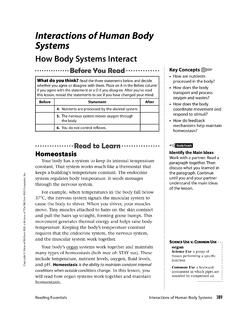
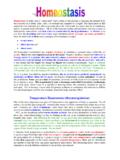




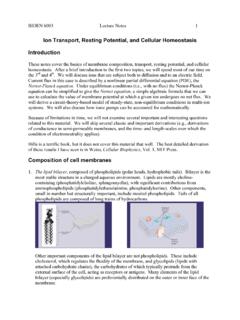









![[1] J - pmt.physicsandmathstutor.com](/cache/preview/8/5/a/e/c/d/c/8/thumb-85aecdc84ea0d1716e550dbd76084726.jpg)


